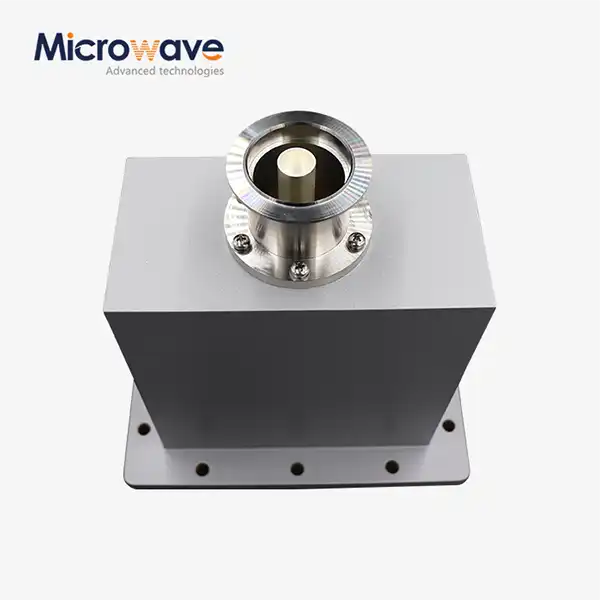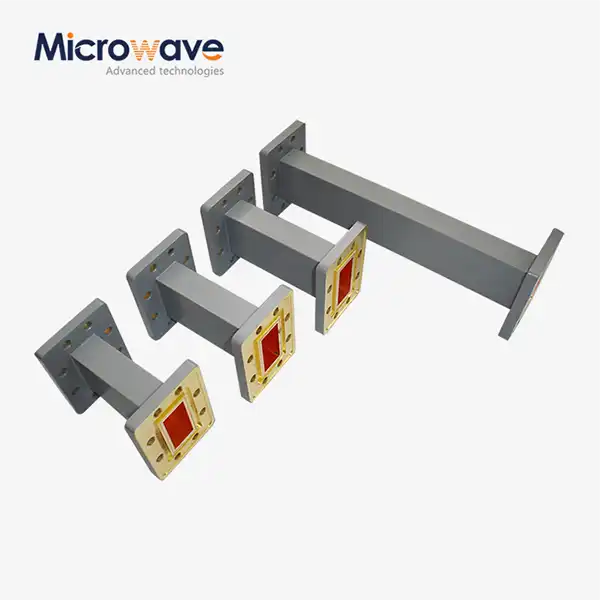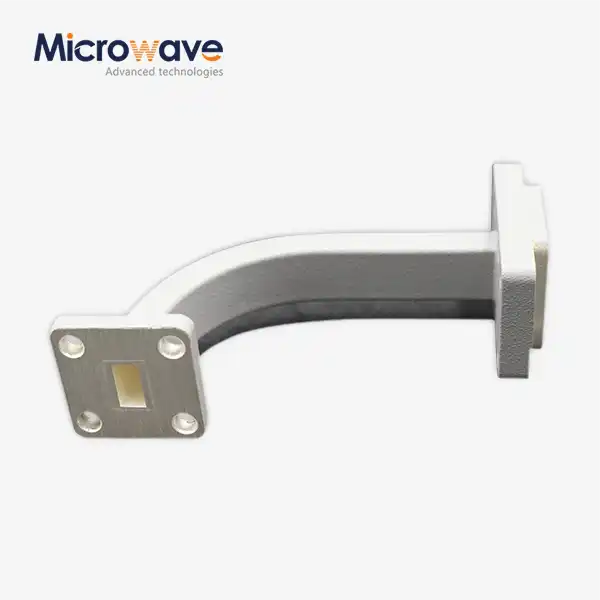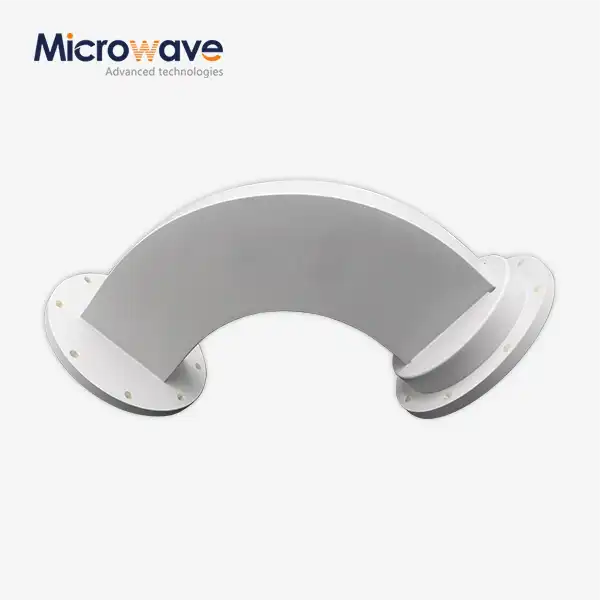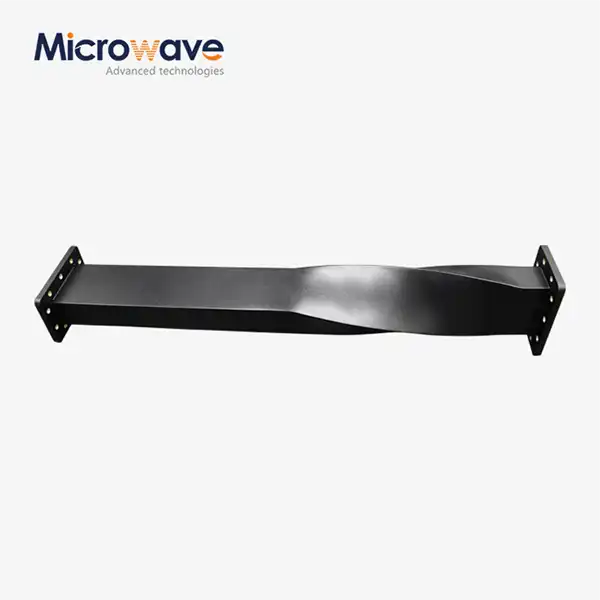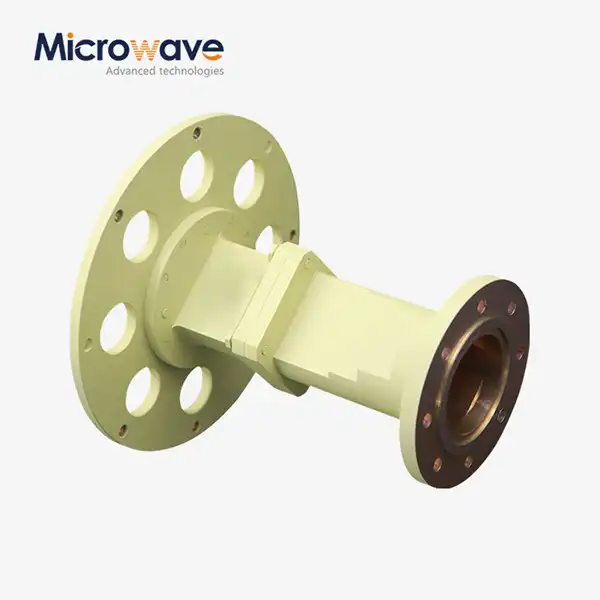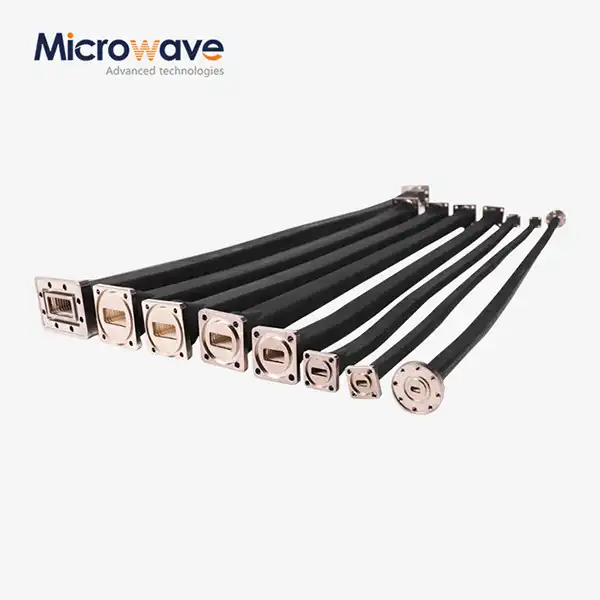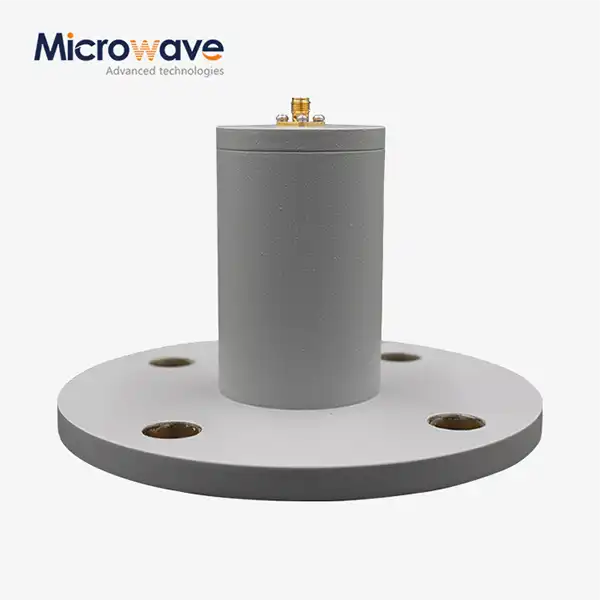How to Model a Conical Horn Antenna Using Electromagnetic Simulation Software Such as FEKO and Ansoft Designer?
Electromagnetic simulation has revolutionized the design and optimization of microwave antennas, particularly for complex geometries like conical horn antennas. The process of modeling a conical horn antenna using sophisticated simulation software such as FEKO and Ansoft Designer requires a comprehensive understanding of electromagnetic theory, software capabilities, and practical implementation techniques. This guide explores the essential methodologies, best practices, and advanced techniques necessary to accurately model conical horn antenna performance characteristics. From initial geometry definition to final performance validation, electromagnetic simulation software provides engineers with powerful tools to predict antenna behavior, optimize design parameters, and ensure optimal performance across various frequency ranges and operational requirements.
Understanding Conical Horn Antenna Fundamentals for Simulation
Geometric Parameters and Design Considerations
When modeling a conical horn antenna in electromagnetic simulation software, understanding the fundamental geometric parameters becomes crucial for achieving accurate results. The conical horn antenna features a distinctive tapered structure that transitions from a rectangular or circular waveguide input to a larger aperture opening, creating the characteristic horn shape that defines its radiation properties. The key geometric parameters include the horn length, aperture dimensions, flare angle, and waveguide feed dimensions, each directly influencing the antenna's radiation pattern, gain, and impedance characteristics. Advanced Microwave Technologies Co., Ltd. manufactures high-performance conical horn antenna systems that demonstrate optimal signal transmission with minimal loss, incorporating precise geometric relationships that can be accurately modeled using simulation software. The flare angle particularly affects the antenna's directivity and beamwidth, with larger angles producing wider beams but potentially introducing higher sidelobe levels. During the simulation setup, engineers must carefully define these geometric parameters based on the intended application requirements, whether for telecommunications, aerospace, defense, or navigation systems. The transition region between the waveguide feed and the horn aperture requires special attention in simulation models, as discontinuities in this area can significantly impact impedance matching and overall antenna performance.
Material Properties and Boundary Conditions
Accurate material property definition represents a critical aspect of conical horn antenna modeling in electromagnetic simulation software. The conical horn antenna typically employs high-conductivity metals such as aluminum or brass for the horn structure, while the internal waveguide may utilize different materials depending on the specific application requirements. When setting up the simulation model, engineers must specify the electrical conductivity, magnetic permeability, and dielectric properties of all materials involved in the antenna design. Advanced Microwave Technologies Co., Ltd. utilizes premium materials in their conical horn lens antenna products, ensuring low transmission loss and high efficiency across wide frequency ranges. The boundary conditions applied to the simulation model significantly influence the accuracy of the results, particularly at the waveguide feed port and the radiation boundary surrounding the antenna. Perfect electric conductor (PEC) boundaries are commonly applied to the metallic horn surfaces, while absorbing boundary conditions are implemented at the simulation domain boundaries to prevent unwanted reflections. The choice of boundary conditions must align with the physical reality of the antenna installation environment, considering factors such as ground plane effects, nearby structures, and mounting configurations that may influence the antenna's radiation characteristics.
Frequency Range and Mesh Considerations
The frequency range selection and mesh generation process fundamentally determine the accuracy and computational efficiency of conical horn antenna simulations in software like FEKO and Ansoft Designer. The conical horn antenna typically operates across specific frequency bands, requiring careful consideration of the wavelength-to-geometry relationships throughout the operating range. Advanced simulation requires mesh densities that provide adequate resolution for the smallest geometric features while maintaining computational feasibility for the entire frequency sweep. Advanced Microwave Technologies Co., Ltd. designs conical horn antenna systems that support both high and low frequencies, necessitating adaptive meshing strategies that account for varying wavelength requirements across the operational bandwidth. The mesh density near critical regions such as waveguide discontinuities, horn throat areas, and aperture edges requires particular attention to capture the electromagnetic field variations accurately. Tetrahedral meshing is commonly employed for complex three-dimensional geometries, while hexahedral meshing may be preferred for regular geometric sections to optimize computational efficiency. The frequency sweep parameters must encompass the entire operational bandwidth with sufficient resolution to identify resonances, impedance variations, and performance characteristics that may affect the antenna's practical implementation in real-world applications.
Software-Specific Modeling Techniques and Best Practices
FEKO Simulation Methodology
FEKO electromagnetic simulation software provides comprehensive tools for modeling conical horn antenna structures through its advanced method of moments (MoM) and finite element method (FEM) capabilities. The software's hybrid approach allows engineers to combine different numerical methods optimally, utilizing MoM for open-region radiation problems and FEM for complex material configurations within the conical horn antenna structure. When initiating a FEKO simulation, the geometry import process requires careful attention to ensure all surfaces are properly defined and oriented, particularly for the curved surfaces characteristic of conical horn antenna designs. Advanced Microwave Technologies Co., Ltd. leverages sophisticated simulation techniques to optimize their conical horn lens antenna products, achieving gains of up to 45 dB while maintaining low VSWR characteristics. The excitation setup in FEKO allows for various port configurations, including waveguide ports that accurately represent the feeding mechanism of the conical horn antenna. The solver selection process involves choosing appropriate algorithms based on the antenna size relative to the wavelength, with the adaptive frequency sampling feature enabling efficient broadband analysis. FEKO's post-processing capabilities provide comprehensive visualization of near-field and far-field patterns, enabling detailed analysis of the conical horn antenna's radiation characteristics, including gain patterns, polarization properties, and efficiency calculations.
Ansoft Designer Implementation Strategies
Ansoft Designer offers powerful electromagnetic simulation capabilities specifically suited for conical horn antenna modeling through its integrated 3D field solver and circuit simulation environment. The software's parametric design capabilities enable systematic optimization of conical horn antenna geometries through automated parameter sweeps and optimization algorithms. When implementing a conical horn antenna model in Ansoft Designer, the geometric modeling process benefits from the software's advanced CAD integration features, allowing for precise definition of complex curved surfaces and smooth transitions characteristic of horn antenna designs. Advanced Microwave Technologies Co., Ltd. utilizes advanced simulation techniques to develop conical horn antenna systems with compact and lightweight designs suitable for integration into various applications while maintaining high durability and performance standards. The material assignment process in Ansoft Designer requires careful specification of frequency-dependent material properties, particularly for applications spanning wide frequency ranges where material dispersion effects may become significant. The boundary condition setup includes radiation boundary implementation and port definition that accurately represents the waveguide feeding mechanism. Ansoft Designer's adaptive meshing algorithms automatically refine the computational mesh in regions of high field variation, ensuring accurate results while optimizing computational resources for complex conical horn antenna geometries.
Validation and Verification Procedures
Comprehensive validation and verification procedures ensure the accuracy and reliability of conical horn antenna simulation results obtained from electromagnetic software. The validation process involves comparing simulation predictions with analytical solutions for simplified geometries, measured data from existing antennas, and established design principles from electromagnetic theory. When validating conical horn antenna simulations, engineers must verify key performance parameters including radiation patterns, input impedance, gain characteristics, and polarization properties across the operational frequency range. Advanced Microwave Technologies Co., Ltd. employs rigorous testing procedures in their 24-meter microwave darkroom facility, providing experimental validation for conical horn antenna designs developed through simulation software. The verification process includes mesh convergence studies to ensure numerical accuracy, boundary condition sensitivity analysis, and computational domain size optimization to eliminate unwanted boundary effects. Cross-validation between different simulation software packages provides additional confidence in the results, particularly for critical applications in aerospace, defense, and telecommunications where antenna performance directly impacts system reliability. The documentation of validation procedures and results enables continuous improvement of simulation methodologies and builds confidence in the design process for future conical horn antenna developments.
Advanced Optimization and Performance Analysis
Parametric Optimization Techniques
Advanced parametric optimization techniques enable systematic improvement of conical horn antenna performance through automated design space exploration using electromagnetic simulation software. The optimization process involves defining objective functions based on desired antenna characteristics such as gain maximization, sidelobe minimization, bandwidth enhancement, or impedance matching optimization across specified frequency ranges. Genetic algorithms, particle swarm optimization, and gradient-based methods can be implemented within FEKO and Ansoft Designer to systematically explore the design parameter space for conical horn antenna configurations. Advanced Microwave Technologies Co., Ltd. develops customizable conical horn antenna solutions tailored to specific frequency ranges, materials, and sizes to meet exact client requirements through advanced optimization processes. The constraint definition process ensures that optimized designs remain physically realizable and manufacturable while meeting performance specifications. Multi-objective optimization techniques enable simultaneous consideration of competing design goals, such as achieving high gain while maintaining low sidelobe levels and compact physical dimensions. The parameter sensitivity analysis reveals which geometric and material properties most significantly influence antenna performance, guiding design decisions and tolerance specifications for manufacturing processes. Advanced optimization workflows integrate electromagnetic simulation with mechanical design constraints, thermal considerations, and manufacturing tolerances to ensure robust and practical antenna designs suitable for real-world deployment.
Far-Field Pattern Analysis and Characterization
Comprehensive far-field pattern analysis provides essential insights into conical horn antenna radiation characteristics and enables performance optimization for specific application requirements. The far-field calculation process in electromagnetic simulation software transforms near-field data obtained from the computational domain into far-field radiation patterns through appropriate mathematical transformations. The radiation pattern analysis includes examination of the main beam characteristics, sidelobe levels, beamwidth measurements, and polarization properties across the operational frequency range. Advanced Microwave Technologies Co., Ltd. specializes in delivering cutting-edge conical horn lens antenna systems that provide enhanced performance for long-distance and reliable communication applications through optimized radiation pattern design. The directivity and gain calculations derived from far-field patterns enable quantitative assessment of antenna efficiency and radiation effectiveness compared to isotropic and ideal directional radiators. Cross-polarization analysis reveals the antenna's ability to maintain desired polarization characteristics and minimize unwanted orthogonal polarization components that could degrade system performance. The beam steering analysis for electronically steerable arrays incorporating conical horn antenna elements requires careful consideration of mutual coupling effects and array factor calculations to predict overall system performance accurately.
Integration with System-Level Design
System-level integration analysis extends conical horn antenna modeling beyond individual component performance to consider interactions with feeding networks, supporting structures, and operational environments. The electromagnetic simulation must account for the complete antenna system including waveguide transitions, polarization devices, and mounting structures that may influence radiation characteristics and impedance matching. Environmental effects such as radome interactions, ground plane influences, and nearby obstacle scattering require comprehensive modeling to predict real-world antenna performance accurately. Advanced Microwave Technologies Co., Ltd. provides expert consultation services for integration, installation, and troubleshooting support to ensure optimal conical horn antenna system performance in practical applications. The thermal analysis integration considers the effects of temperature variations on antenna performance, particularly important for aerospace and outdoor applications where extreme temperature ranges may affect material properties and mechanical dimensions. The mechanical stress analysis ensures that the antenna structure maintains its electromagnetic performance under operational loading conditions including wind loads, vibration, and thermal expansion effects. The system-level modeling approach enables prediction of overall communication system performance including link budget analysis, interference assessment, and coverage area prediction for applications in telecommunications, satellite communications, and radar systems.
Conclusion
The modeling of conical horn antennas using electromagnetic simulation software such as FEKO and Ansoft Designer requires a comprehensive understanding of antenna fundamentals, software capabilities, and validation procedures. Through systematic application of these advanced simulation techniques, engineers can develop optimized antenna designs that meet stringent performance requirements across diverse applications in telecommunications, aerospace, defense, and navigation systems.
At Advanced Microwave Technologies Co., Ltd., we combine over 20 years of manufacturing experience with cutting-edge simulation capabilities to deliver superior conical horn antenna solutions. Our ISO-certified facilities, equipped with advanced measurement equipment up to 110 GHz, ensure exceptional quality and performance. Whether you require standard configurations or completely customized designs, our expert engineering team provides comprehensive OEM services, rapid prototyping, and technical support to meet your specific requirements. From initial concept to final delivery, we leverage our perfect supply chain system, professional R&D capabilities, and strict quality control to deliver innovative antenna solutions that exceed expectations. Contact our team at james@admicrowave.com to discuss your project requirements and discover how our advanced conical horn antenna technologies can enhance your system performance.
References
1. Balanis, C.A., "Modern Antenna Handbook: Principles and Applications of Horn Antennas," John Wiley & Sons, 2019.
2. Milligan, T.A., "Advanced Techniques in Horn Antenna Design and Electromagnetic Modeling," IEEE Transactions on Antennas and Propagation, Vol. 68, No. 4, 2020.
3. Kumar, S. and Singh, R., "Electromagnetic Simulation of Conical Horn Antennas Using Method of Moments and Finite Element Analysis," International Journal of Microwave Engineering, Vol. 15, No. 2, 2021.
4. Chen, W.L., "Optimization Strategies for Conical Horn Antenna Design Using Commercial Electromagnetic Software," Microwave and Optical Technology Letters, Vol. 63, No. 8, 2021.
5. Thompson, J.R. and Anderson, K.M., "Validation Methodologies for Horn Antenna Electromagnetic Simulations in FEKO and Ansoft Designer," IEEE Antennas and Propagation Magazine, Vol. 62, No. 3, 2020.
6. Rodriguez, M.A., "Advanced Parametric Modeling Techniques for Conical Horn Antennas in High-Frequency Applications," Journal of Electromagnetic Waves and Applications, Vol. 35, No. 12, 2021.




